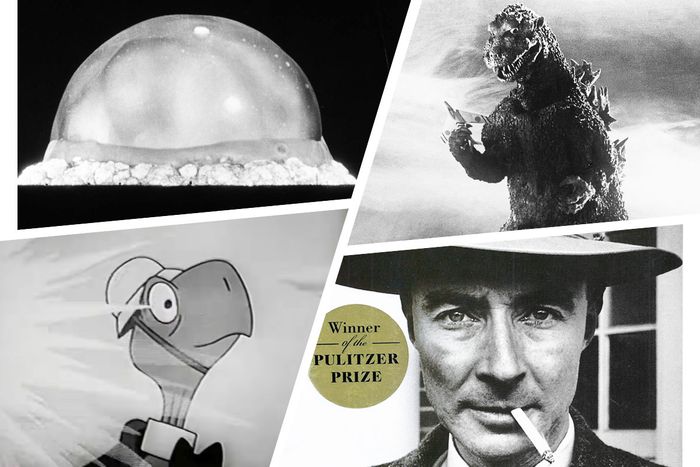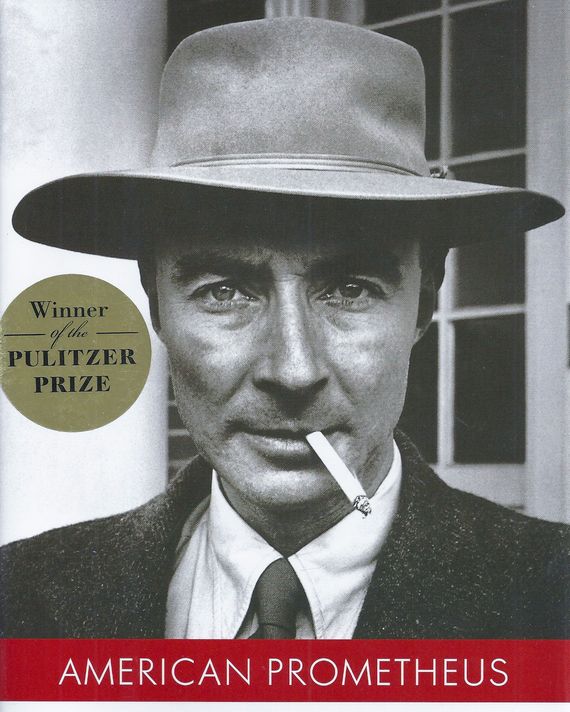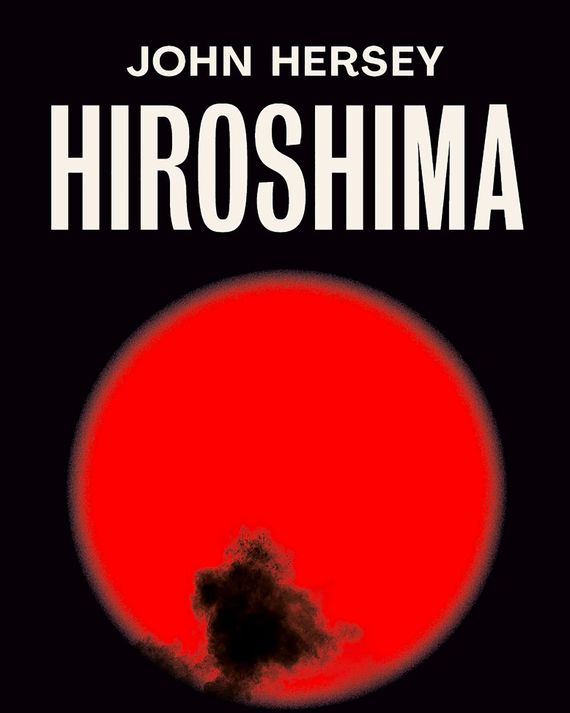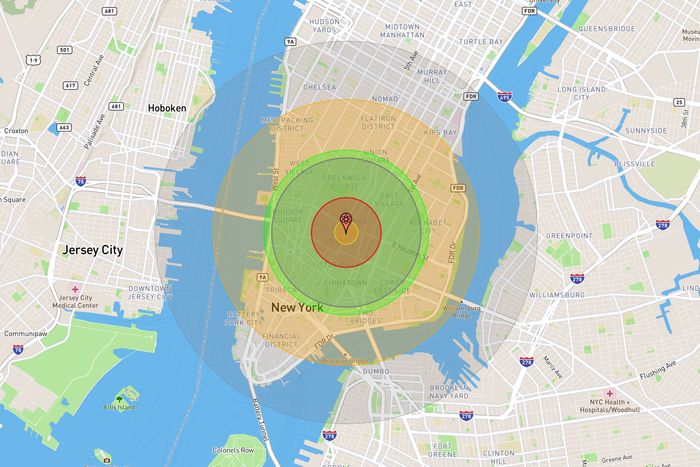
At about two hours into Christopher Nolan’s new film, Oppenheimer, the world changes. The Trinity test of July 16, 1945, marks the dawn of the nuclear age in a literal and figurative sense. Fallout from the explosion reached 46 states, as well as parts of Canada and Mexico. The 5:30 a.m. blast was also bright enough that it appeared, to those who witnessed it, as though the sun had risen twice that day.
Nolan’s movie builds to the test, though he refuses to let Oppenheimer’s story end with the Trinity or the successful detonation of two nuclear bombs against Japan. The movie is as much a tale of the red scare, of tensions within the U.S. government after the war over how to develop and control the bomb. Nolan’s telling emphasizes the way in which J. Robert Oppenheimer’s advocacy was caught in the fallout from his specific friendships and affairs.
Audiences attending the film can expect to get a primer on nuclear development, Sorkin-esque hearings, and an endless parade of characters playing the collection of weird little guys that filled the labs at Los Alamos. (There are so, so, so many weird little guys.) Oppenheimer is the central figure in the creation story of the single most defining technology of the 20th century, and Nolan’s biopic centers the physicist’s own convictions and doubts about the bomb and, postwar, his forced ouster from the Atomic Energy Commission in a red scare.
But, as the haunting ending of the movie makes so dreadfully clear, Oppenheimer’s story as told in this movie is not the end of the atomic era. If you are traumatized by the ending or are looking to understand more of the atomic bomb, thermonuclear warfare, and the impacts of the weapon Nolan leaves off the silver screen, here’s a collection of books, films, and pieces of pop culture that can serve as a crash course into atomic peril.
American Prometheus
At three hours, Nolan’s film is his longest yet, and it still only covers a fraction of the physicist’s life in any sort of depth. At 700 pages, the 2005 biography American Prometheus is a sumptuous feast of knowledge, compared to Nolan’s curated sampler of its contents. Written by Kai Bird and Martin J. Sherwin, Nolan has cited it as the direct inspiration and basis for his film, which is reason enough to pick it up. The text flows, aware of the scale of the life it is describing while ensuring the details tie into later events. Prometheus contains portraits of Oppenheimer’s family life at Princeton, his close collaboration with diplomat George Kennan, and how Frank and Jackie Oppenheimer spent the years of Frank’s academic exile. In one particularly compelling section, the authors detail how opposition to the hydrogen bomb led Oppenheimer to endorse battlefield nuclear weapons, what are now referred to confusingly as “tactical nuclear weapons.” Parts of the book are informed by information about Oppenheimer acquired from unwarranted wiretaps. It is likely the best single-volume book on Oppenheimer, worth it alone for the Rashomon-like approach to his attempted poisoning by apple of a graduate adviser. (Yes, that really happened.)
The Lake of Trinitite
What did the Trinity site look like after the smoke had cleared? And what happened to the people who lived around the Trinity test site? Oppenheimer doesn’t show the immediate — or lingering — physical effects of the blast. But in this short clip, filmed by the Manhattan Project shortly after the detonation and only made public in 2019 thanks to the Freedom of Information Act, an aerial photographer films the “lake of trinitite” formed after the explosion. The lake is in the center of a crater roughly 1,000 feet in diameter. When Gadget was detonated in the sparsely but not uninhabited swath of New Mexico desert, it transformed the world around it. Much of that transformation is metaphorical, as the atomic bomb and fear of it changed the behavior of militaries and world leaders. Some of that transformation is literal: The sand under the tower was pulled up into the fireball, melted and combined with other debris, then fell to the ground as a mostly light-green glass. Trinitite is the most aesthetically pleasing manifestation of fallout, a gray-green rock formed in a nuclear furnace. Other fallout has been traced to 46 states, Mexico, and Canada. The 40,000 New Mexicans who lived near where the bomb was detonated became the first atomic downwinders, and while they are not depicted or even mentioned onscreen, their work for recognition and compensation continues to this day.
The Day After Trinity
The Day After Trinity is a 1980 documentary that tells the story of the bomb’s development in a tight, 88-minute run time. Featuring interviews from people involved in the project, like Los Alamos physicist Robert Serber, mathematician Stanislaw Ulam, and Frank Oppenheimer, the film captures the terrible wonder and power of the weapon bomb, thanks in part to archival footage. It also captures the reaction of the people who built it, their decades-later reflection on the moment that technical success turned into terrible implications for the future of war. The Day After Trinity director Jon H. Else is unsparing in those implications, showing fields of bones in the rubble of Hiroshima and Nagasaki alongside medical clinics bandaging the radiation burns of survivors, including children. In one moment that captured the precise tension between science and horror, Serber holds up a section of burnt wall, which has lighter patterns where a window frame obstructed the flash and the blast. Serber used the angle of the window frame on the wall to calculate the height at which the bomb detonated.
John Hersey’s Hiroshima
Readers of the August 31, 1946, New Yorker were treated to a singular spectacle. The entire issue was one story, reported by John Hersey, that detailed the aftermath of the first atomic bomb used in war. Hersey tells the story of six survivors of the blast and the story of the whole bomb. It’s available to read through The New Yorker, and the account has also been published as a book, in print since 1946. That the story is first encountered as homework may sour first-time readers on it, but its plain language and comprehensive portrait of the weapon’s devastation endure as testament to the horrors of atomic weaponry — and it’s perhaps a necessary pairing with Oppenheimer, which does not show the impact of the bombs on their Japanese victims in any sort of detail. The bombs the U.S. dropped on Hiroshima and Nagasaki are estimated to have killed either 110,000 or 210,000 people, numbers important to know but staggering to comprehend. Hersey’s reporting reveals that the numbers alone do not do the terror of atomic warfare justice, as surviving after the blast is an ordeal of its own. Later editions of the book include a chapter titled “The Aftermath,” which follows up with the original survivors 40 years later.
“Ruth’s Story”
In Oppenheimer, Nolan centers the narrative of the Manhattan Project on the research laboratory in Los Alamos. While the scientists on the mesa figured out how to build the bomb, other parts of the project were responsible for enriching uranium and refining plutonium, the actual fissile material used in the bombs, and represented onscreen as marbles filling a bucket. One of these sites was Oak Ridge in Tennessee, which was built as another secret city, devoted to the production of uranium for the atomic bomb. The Department of Energy has a podcast interview with Ruth Huddleston, who as an 18-year-old worked at a calutron uranium separation machine. She learned only after the bombing of Hiroshima that she had played any role in the bomb’s production, and it took years after that to learn the specific nature of her work. The book Girls of Atomic City offers a broader overview of the work at Oak Ridge, and the National Museum of Nuclear Science and History has a collection of oral histories, including one with Robert Oppenheimer.
Duck and Cover
In the early atomic age, before the arsenals of the United States and the Soviet Union grew to thousands of thermonuclear warheads, the Federal Civil Defense Administration was tasked with figuring out how to better increase the survival of Americans in the event of a nuclear war. Dealing with numbers at a population scale, and planning around warheads with explosive force measured in kilotons of TNT, rather than megatons, Civil Defense produced maybe the most iconic instructive film of the Cold War: Duck and Cover, Starring Bert the Turtle. Would hiding under a desk or away from windows have saved people? Not everyone, and certainly not anyone in the fireball radius, but at the scale of nuclear war, it would have saved some percentage of lives.
Fail Safe
In 1964’s Fail Safe, it is not just nuclear weapons that pose tremendous risk, it is the secret and secure mechanism used to ensure the weapons, once launched, will continue to their targets. Sidney Lumet’s atomic thriller is split between a U.S. bomber ground-bound for Moscow after a false alarm and the efforts of the militaries and leadership in both the U.S. and USSR to try and prevent a nuclear war over an erroneous signal. Like 1964’s Stanley Kubrick–directed Dr. Strangelove, Fail Safe hinges on the grim danger of launch orders that preclude the possibility of recall. Unlike the dark comedy and driven fanatics of Strangelove, Fail Safe hinges its plot largely on the system working as intended to send the bombers skyward, without any deliberate malice in the orders given. The systems shown in Fail Safe rely on secrecy and suspicion, products of a closed national-security world. Before he lost his clearance, Oppenheimer’s policy fights over the H-bomb largely took place behind closed doors, where only people with clearances had the knowledge to debate such choices. Fail Safe is about the terror of the bomb, and also the terror of nuclear-war plans made in secret.
The Atomic Café
Practical as the advice in Duck and Cover may have seemed when it was released in 1951, the newly invented thermonuclear H-bombs were so powerful that the notion of shelter or even evacuation was unlikely. By 1982, the absurdity of winnable nuclear war was palpable. The Atomic Café is a found-footage film, available in full on YouTube and on Tubi, that stitches together government-produced footage of the bomb into a narration-free waltz through the Cold War. The film shows government-produced film of Gadget and the Trinity Test early before the start of a journey into the Cold War. In many ways, it is a document about the move from fusion to fission bombs. Things grimly escalate as President Lyndon B. Johnson outlines the reality of living with the H-bomb, building toward a fiery crescendo, where comically naïve instructional footage like Bert the Turtle is interspersed with the destruction of planes and houses in atomic tests. Oppenheimer rejected the development of hydrogen bombs on technical grounds during the war and he objected to them on moral grounds afterwards, and the clear futility of Bert’s juxtaposed advice is a dark illustration of why.
Command and Control
Nuclear weapons are a human enterprise, which means they are subject to human error. Command and Control is a 2013 book by Eric Schlosser that was adapted into a documentary of the same name in 2016, and it details the accidents, errors, and mishaps that come with the day-to-day existence of nuclear weapons. While no nuclear weapon has been used in war since 1945, the nine countries with nuclear weapons have kept weapons in various states of readiness in case they are needed. Schlosser’s narrative covers other accidents and near-misses while remaining centered on the Damascus incident, where a dropped socket wrench ultimately led to a Titan II ICBM ejecting part of its rocket, and the warhead landed outside the missile silo. The nuclear warhead itself was meticulously engineered to not detonate unless deliberately armed, but plenty can, did, and does go wrong in the routine stewardship of an arsenal of oblivion — the “chain reaction” that Oppenheimer warns of at the end of the movie could be furthered by an accident, rather than malice, and the end result would be the same.
The Day After
In The Day After, a film that aired on ABC in 1983, nuclear war between the USSR and the United States happens partway through the narrative, and the rest of the film is left to depict what life is like for a handful of survivors in Kansas City. The film is unsparing in its depictions of nuclear destruction, radiation sickness, and social breakdown. It is likely as close to a documentary as possible of what a nuclear war would look like. The Day After ends with a disclaimer that “the catastrophic events you have just witnessed are, in all likelihood, less severe than the destruction that would actually occur in the event of a full nuclear strike against the United States.” President Ronald Reagan, upon seeing it early, recorded in his diary, “It’s very effective and left me greatly depressed … My own reaction was one of our having to do all we can to have a deterrent & to see there is never a nuclear war.”
Nukemap
Want to know what a nuclear explosion would do to your home, or downtown Manhattan, or anywhere in the world? Click on over to Nukemap, put in the city of your choice, then select a yield from the handy drop-down menu. To line up with the detonation in Oppenheimer, pick Gadget (the Trinity bomb), Little Boy (the bomb dropped on Hiroshima), or Fat Man (the bomb dropped on Nagasaki), and then hit the big red “detonate” button. Even without toggling on the “fallout” and “casualties” options, the phrase “fireball radius” is evocative enough. Nukemap is the work of technology historian Alex Wellerstein, and it remains the cleanest way to picture the scale of devastation from a single warhead. The bombs Oppenheimer worked with were staggering in their power and are also an order or two smaller than many of the bombs still in service today. Try the B83, the largest bomb presently in the U.S. arsenal, to see the scale of an H-bomb totally dwarf the blast radius of an A-bomb.
Godzilla
On March 1, 1954, the United States detonated Castle Bravo, the largest warhead it has ever detonated. Edward Teller, played in Oppenheimer by Benny Safdie, developed the H-bomb in collaboration with Stanislaw Ulam. By using fusion to power a thermonuclear reaction, H-bomb explosions can be massively more powerful than fission reactions, like that in Gadget. In 1949, Oppenheimer had recommended against developing such a bomb but was not in a position to stop it.
What does all this have to do with a giant lizard? Fallout from Bravo hit Lucky Dragon 5, a Japanese fishing ship, and afflicted the crew with radiation sickness, ultimately killing one member. The incident inspired Godzilla producer Tomoyuki Tanaka, and the movie opens with the mysterious destruction of a Japanese fishing ship at sea. The film is about nuclear war, nuclear testing, the devastation of superweapons, the hubris of scientists, and the assurance that this would happen again if nothing changed. These heavy themes were largely omitted from a bowdlerized and recut American edit of the film that came out two years later. Whereas the original Japanese film ends with a solemn observation that another “Godzilla” is inevitable if humanity keeps testing nuclear weapons, the American one cheerily celebrates that the world can “wake up and live again.”
The film, and its American recut, present the microcosm of atomic film: The nuclear age is full of waiting horrors, but to get audiences to watch, they sometimes have to be drowned in popcorn.




